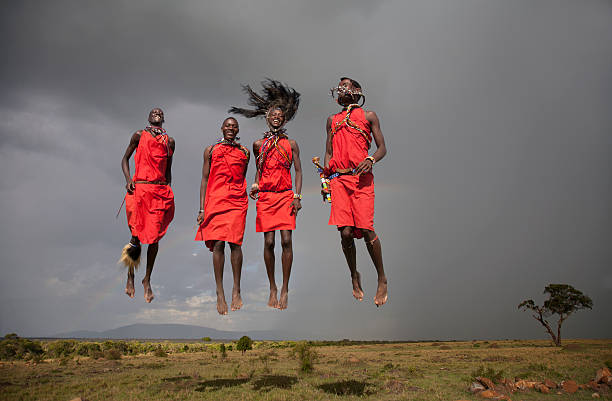When it comes to dream destinations, Kenya stands out as one of the most iconic travel experiences in Africa. For European travelers, this East African gem offers a perfect blend of adventure, culture, wildlife, and breathtaking landscapes. From the majestic Maasai Mara to the snow-capped Mount Kilimanjaro, Kenya is a country that delivers unforgettable memories.
However, with its vast distances, cultural nuances, and logistical considerations, visiting Kenya can feel overwhelming if you’re not properly prepared. In this comprehensive guide, we’ll explore why Kenya is an ideal destination for European travelers, what to expect during your visit, and how to plan a safe, smooth, and rewarding trip.
Why Visit Kenya as a Traveler?
Kenya is one of the most accessible and welcoming countries in Africa, especially for visitors from Europe. Here are some key reasons why it should be on every traveler’s bucket list:
1. World-Class Wildlife and Safaris
Kenya is synonymous with safari. Home to the Big Five (lion, leopard, elephant, buffalo, and rhino), Kenya’s national parks and reserves offer some of the best game-viewing opportunities in the world. The Maasai Mara , famous for the Great Migration, is a must-visit. Other top parks include Amboseli , where elephants roam under the shadow of Mount Kilimanjaro, and Tsavo , known for its vast wilderness and unique red sands.
2. Cultural Diversity and Warm Hospitality
Kenya is home to over 40 ethnic groups, each with its own traditions, languages, and customs. The Maasai people , known for their vibrant clothing and warrior culture, are among the most iconic. Many lodges and tour operators offer cultural visits, giving travelers the chance to learn about local life firsthand.
3. Natural Beauty and Adventure Opportunities
Beyond the savannahs, Kenya boasts stunning beaches along the Indian Ocean, dramatic mountain ranges, and pristine lakes. Whether you’re hiking up Mount Kenya , snorkeling in the turquoise waters of Diani Beach , or birdwatching in Lake Nakuru , there’s something for every kind of adventurer.
4. Accessibility and Infrastructure
Compared to many other African countries, Kenya has well-developed infrastructure, including paved roads, reliable domestic flights, and modern hotels. Nairobi, the capital city, serves as a major hub with international airports, making it easy for Europeans to connect from cities like London, Paris, Amsterdam, or Frankfurt.
5. Affordable Luxury and Budget Options
Kenya offers a wide range of accommodations to suit all budgets. From luxury lodges in the bush to budget-friendly guesthouses in Nairobi, you can enjoy high-quality service without breaking the bank.
What to Expect When Visiting Kenya as a European
If you’re planning a trip to Kenya, here’s what you need to know to make the most of your journey.
1. Visa Requirements for European Travelers
European Union citizens do not require a visa for short stays in Kenya (up to 90 days). However, it’s always wise to check the latest entry requirements before departure, as policies can change. Make sure your passport is valid for at least six months beyond your intended stay.
2. Getting There and Around
Most European travelers fly into Jomo Kenyatta International Airport (NBO) in Nairobi. Flights are available from major hubs like London (British Airways, Kenya Airways), Paris (Air France), and Amsterdam (KLM).
Once in Kenya, internal travel is usually done by private car, minibus, or domestic flight. Major parks like the Maasai Mara are typically accessed via chartered flights from Nairobi, which take about an hour and offer a scenic aerial view of the landscape.
3. Health and Safety Considerations
While Kenya is generally safe for tourists, it’s important to take standard precautions. Ensure you have travel insurance, carry a copy of your passport, and avoid walking alone at night in unfamiliar areas.
Health-wise, consult your doctor before traveling and get recommended vaccinations such as yellow fever, hepatitis A and B, typhoid, and rabies. Malaria prophylaxis is also advised, particularly in lowland regions.
4. Best Time to Visit
The best time to visit Kenya depends on your interests:
- June to October : Dry season in the Masai Mara, ideal for safaris and the Great Migration.
- December to March : Peak tourist season with warm weather and lush landscapes.
- April to May : Short rains—still a good time to visit but with more rain in coastal areas.
- November : Shoulder season, less crowded and more affordable.
Top Experiences for European Travelers in Kenya
Here are some of the must-do activities and places to see in Kenya:
1. Go on a Safari in the Maasai Mara
No trip to Kenya is complete without a visit to the Maasai Mara. This world-famous reserve is home to the annual wildebeest migration, where millions of animals cross the Mara River. Morning and evening game drives offer incredible photo opportunities and chances to spot the Big Five.
2. Visit Amboseli National Park
Located near the Tanzanian border, Amboseli is renowned for its large elephant herds and stunning views of Mount Kilimanjaro. It’s one of the best places in Africa to photograph elephants against a dramatic mountain backdrop.
3. Explore Lake Nakuru and Lake Naivasha
These two beautiful lakes are located in the Great Rift Valley. Lake Nakuru is famous for its flamingo populations, while Lake Naivasha offers boat cruises and visits to the Hell’s Gate National Park, known for its dramatic rock formations and hot springs.
4. Relax on the Beaches of Diani or Lamu
After a few days in the bush, unwind on Kenya’s pristine beaches. Diani Beach , just south of Mombasa, is a popular choice with water sports, resorts, and nightlife. Lamu Island , a UNESCO World Heritage Site, offers a slower pace of life with coral-stone architecture and Swahili culture.
5. Hike Mount Kenya
For those seeking adventure, a trek up Mount Kenya is a fantastic option. As Africa’s second-highest peak, it offers challenging hikes with stunning alpine scenery and the chance to see glaciers, even though they are rapidly disappearing due to climate change.
6. Experience Local Culture
From visiting a Maasai village to attending a traditional dance performance, Kenya offers rich cultural experiences. The Karen Blixen Museum in Nairobi is also worth a visit for fans of the book Out of Africa .
Tips for a Smooth Trip to Kenya
To ensure a stress-free and enjoyable trip, keep these tips in mind:
- Pack Light and Smart : Bring layers for cool mornings and evenings, comfortable shoes for walking, and sun protection (hat, sunglasses, sunscreen).
- Stay Hydrated : Drink bottled water and avoid tap water to prevent stomach issues.
- Respect Local Customs : Dress modestly when visiting villages or religious sites, and ask permission before taking photos of people.
- Use Reputable Tour Operators : Choose licensed and eco-friendly tour companies to support sustainable tourism.
- Learn Some Basic Swahili Phrases : While English is widely spoken, learning a few words like “Jambo” (hello) or “Asante” (thank you) will go a long way.
Final Thoughts
Kenya is a land of contrasts and wonders, offering European travelers a once-in-a-lifetime experience filled with adventure, culture, and natural beauty. Whether you’re chasing the Big Five in the Maasai Mara, relaxing on the white-sand beaches of Diani, or exploring the ancient ruins of Lamu, Kenya promises unforgettable memories.
With its ease of access, diverse attractions, and warm hospitality, Kenya is the perfect destination for European travelers looking to discover the heart of Africa. So pack your bags, grab your camera, and get ready to fall in love with Kenya.


